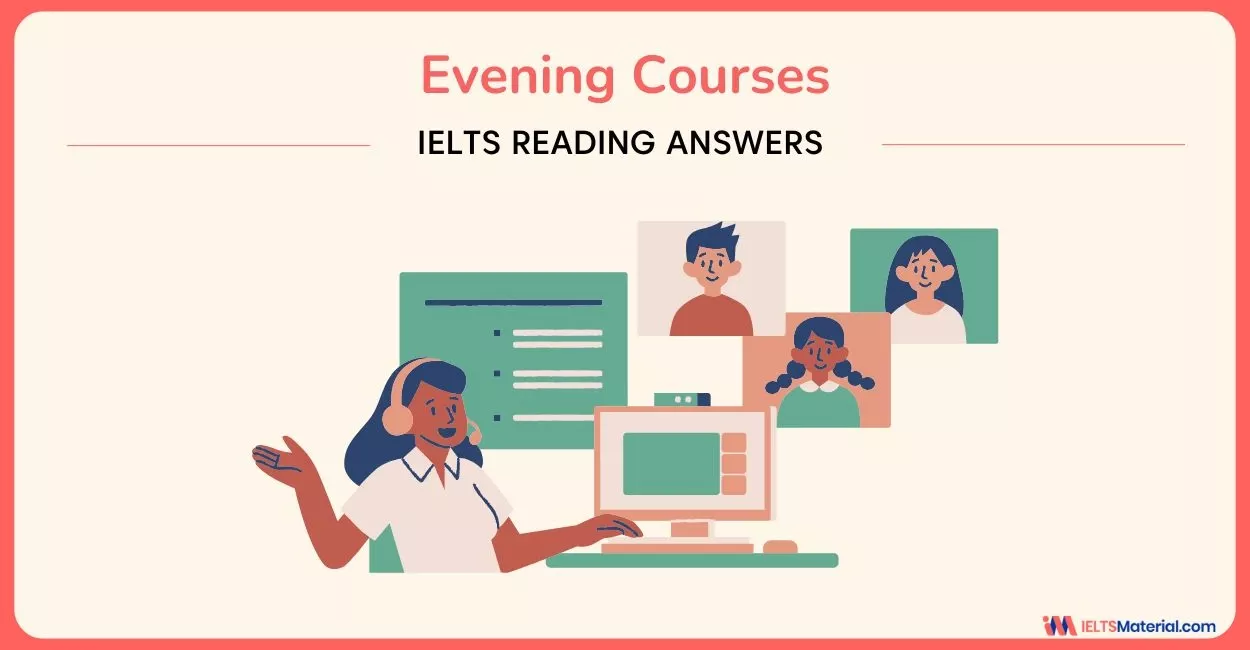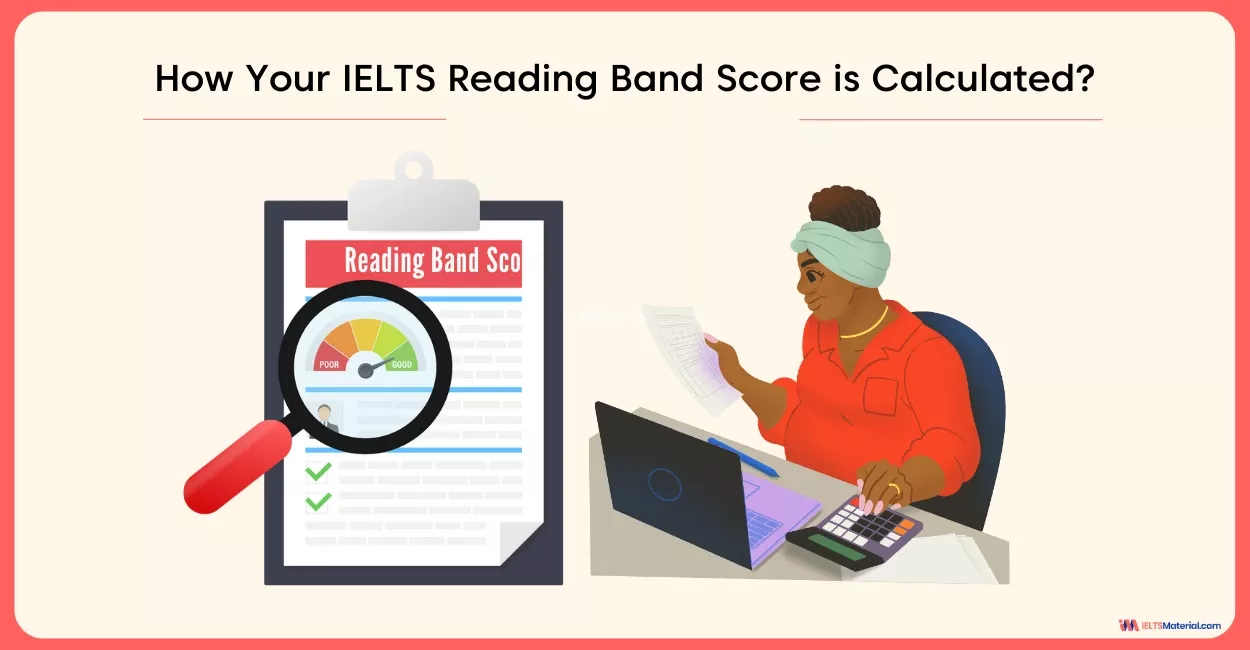Safety When Working On Roofs & Maternity Allowance For Working Women – IELTS Reading Answers
Struggling with the Reading module of the IELTS exam? Check out the strategies for the question types in the passages, 'Safety When Working On Roofs & Maternity Allowance For Working Women – IELTS Reading Answers' and achieve a band 8+.
Table of Contents
- Types of Questions in Safety When Working On Roofs & Maternity Allowance For Working Women – IELTS Reading Answers
- Tips for Answering Safety When Working On Roofs & Maternity Allowance For Working Women – IELTS Reading Answers for a Band 8+
- Reading Passage 1 - Safety When Working On Roofs
- Reading Passage 2 - Maternity Allowance For Working Women
- Answers With Location and Explanations for Safety When Working On Roofs & Maternity Allowance For Working Women – IELTS Reading

Limited-Time Offer : Access a FREE 10-Day IELTS Study Plan!
The passages, 'Safety When Working On Roofs & Maternity Allowance For Working Women – IELTS Reading Answers’ will be helpful when preparing for the IELTS General Reading test. These passages help in making you become familiar with the different strategies and question types. Both passages provide an overview of the examination and reading module which you will encounter. With consistent preparation, you will achieve a higher band score of 8+.
You need to keep in mind that these passages will guide you for the IELTS Exam if you aim for a score of 8+. You can approach answering all of the questions given before looking at the answers. In this way, you will understand the exam pattern and also identify the areas that need your attention the most. Diligent practice will improve your reading skills while enhancing your ability to answer the questions within the time limit.
Let's get started!
Connect with our band 9 IELTS Trainers to crack your IELTS Reading in no time! Book a FREE Demo.
Types of Questions in Safety When Working On Roofs & Maternity Allowance For Working Women – IELTS Reading Answers
As you prepare for the IELTS Reading module, you need to understand the various types of questions which will be asked in the passages on 'Safety When Working On Roofs & Maternity Allowance For Working Women'. Knowing these will allow you to level up your preparation and also note if there are any specific questions that you struggle with. This will help in doing a targeted study so that you can not only improve your skills but also gain the required knowledge needed to attempt the questions. The question types in these Reading Passages include:
- IELTS Reading Note Completion (Q. 1-8)
- IELTS Reading Sentence Completion (Q. 9-13)
Tips for Answering Safety When Working On Roofs & Maternity Allowance For Working Women – IELTS Reading Answers for a Band 8+
In order to effectively attempt the Reading section, it is crucial to manage your time while scanning for essential phrases and answering the questions as per the instructions given. These important strategies need to be understood and practiced if you are aiming for the band score of 8+. Now, let’s guide you through the IELTS Exam Preparation Tips for Band Score of 8+ and check out strategies for both the question type which will help you understand how to approach the question.
- In Note Completion questions, you need to complete a set of notes, summaries, or sentences with information from the passage.
- Before you begin reading the passage, quickly skim through the notes or sentences that need to be completed. Pay attention to keywords and the structure of the notes. This will give you an idea of what to look for in the text.
- As you read the passage, actively search for information that matches the content of the notes. Look for keywords, phrases, and concepts that align with what’s missing in the notes. Prepare yourself by understanding How to Ace IELTS Reading with 'Keyword Technique'.
- Pay close attention to the context of the passage and the surrounding information. This context can provide valuable clues to help you fill in the missing parts of the notes. Understand the flow of the text to ensure your answers make sense in the given context.
- The passage may not always use the same wording as the notes. Be on the lookout for synonyms, paraphrases, or similar expressions that convey the same meaning. The ability to recognize and interpret paraphrased information is crucial in this question type.
- When completing the notes, make your answers clear and concise. Avoid unnecessary details or lengthy sentences. Keep in mind that the notes are typically shorter and more focused than the original text. Ensure that your answers fit the format and structure of the notes provided.
- It is ideal to put the timer on since Time Management for IELTS Reading plays a crucial role.
- In Sentence Completion Questions, you need to fill in the sentences with keywords hidden in the reading passages with the following tips as they’ll come in handy for your preparation.
- Begin by reading the sentence with the gap or blank. Try to understand the context and the type of word that should fit the gap (e.g., noun, verb, adjective).
- Scan the surrounding sentences for clues that can help you determine the missing word. Sometimes, the sentence structure or the words nearby can provide hints.
- Pay attention to the grammar of the sentence. If the sentence requires a verb, make sure you choose a verb form that fits the context. The same goes for nouns, adjectives, and other parts of speech.
- Draw on your IELTS Vocabulary to come up with a suitable word for the gap. Ensure that the word you choose makes sense in the context of the sentence.
- After you’ve filled in the gap, read the entire sentence to ensure that it flows naturally and makes sense. The completed sentence should be grammatically correct and logically coherent.
Dive into the video given below to know about the strategies which you can use for sentence completion questions.
Reading Passage 1 - Safety When Working On Roofs
| You should spend about 10 minutes on questions 1-7, which are based on Reading Passage 1 below. |
Safety When Working On Roofs
A. A fall from height is the most serious hazard associated with roof work. Preventing falls from roofs is a priority for WorkSafe New Zealand. Investigations by WorkSafe into falls that occur while working at height show that more than 50 percent of falls are from under three meters, and most of these are from ladders and roofs. The cost of these falls is estimated to be $24 million a year – to say nothing of the human costs that result from these falls. More injuries happen on residential building sites than in any other workplace in the construction sector.
B. In order to prevent such injuries, a hazard assessment should be carried out for all work on roofs to assess potential dangers. It is essential that the hazards are identified before the work starts, and that the necessary equipment, appropriate precautions, and systems of work are provided and implemented. Hazard identification should be repeated periodically or when there is a change in conditions, for example, the weather or the number of staff onsite.
C. The first thing to be considered is whether it is possible to eliminate this hazard completely so that workers are not exposed to the danger of falling. This can sometimes be done at the design, construction planning, and tendering stages. If the possibility of a failure cannot be eliminated, some form of edge protection should be used to prevent workers from falling. It may be possible to use the existing scaffolding as edge protection. If this is not practicable, then temporary work platforms should be used. In cases where such protection is not possible, then steps should be taken to minimize the likelihood of any harm resulting. This means considering the use of safety nets and other similar systems to make it less likely that injury will be caused if a fall does occur.
D. Ladders should only be employed for short-duration maintenance work such as touching up paint. People using ladders should be trained and instructed in the selection and safe use of ladders. There should be an inspection of all ladders on a regular basis to ensure they are safe to use.
Questions 1-8
Complete the notes below.
Write NO MORE THAN THREE WORDS AND/OR A NUMBER from the text for each answer.
Write your answers in boxes 1-8 on your answer sheet.
Safety when working on roofs
Investigations show that
- over half of falls are from less than 1 ……………………
- most falls are from ladders and roofs
- falls cost $24 million per year
- the majority of falls occur on 2 ……………………
Hazard identification should be carried out
- before the work starts
- when conditions such as the weather or worker numbers change
Controls
- 3 …………………… the hazard at the planning stage before the work begins if possible
- prevent a fall by using edge protection e.g. scaffolding or 4 …………………… .
- reduce the likelihood of injury, e.g. by using 5 …………………….
Ladders
- these should only be used for 6 …………………… which does not take a long time
- training should be provided in their 7 …………………… and use
- regular 8 …………………… of ladders is required.
Reading Passage 2 - Maternity Allowance For Working Women
| You should spend about 10 minutes on questions 9-13, which are based on Reading Passage 2 below. |
Maternity Allowance For Working Women
A. You can claim Maternity Allowance once you’ve been pregnant for 26 weeks. Payments start 11 weeks before the date on which your baby is due.
The amount you can get depends on your eligibility. You could get either:
- £140.98 a week or 90% of your average weekly earnings (whichever is less) for 39 weeks
- £27 a week for 14 weeks
B. Maternity Allowance for 39 weeks
You might get Maternity Allowance for 39 weeks if one of the following applies:
- you’re employed
- you’re self-employed and pay Class 2 National Insurance (including voluntary National Insurance)
- you’ve recently stopped working
- You may still qualify even if you’ve recently stopped working. It doesn’t matter if you had different jobs, or periods when you were unemployed.
C. Maternity Allowance for 14 weeks
You might get Maternity Allowance for 14 weeks if for at least 26 weeks in the 66 weeks before your baby is due:
- you were married or in a civil partnership
- you were not employed or self-employed
- you took part in the business of your self-employed spouse or civil partner
D. How to claim
- You’ll need an MA1 claim form, available online. You can print this and fill it in, or fill it in online. You also need to provide a payslip or a Certificate of Small Earnings Exemption as proof of your income, and proof of the baby’s due date, such as a doctor’s letter.
- You should get a decision on your claim within 24 working days.
- You should report any changes to your circumstances, for example, if you go back to work, to your local Jobcentre Plus as they can affect how much allowance you get.
Questions 9-13
Complete the sentences below.
Write NO MORE THAN TWO WORDS AND/OR A NUMBER from the text for each answer.
Write your answers in boxes 9-13 on your answer sheet.
- The maximum amount of money a woman can get each week is £ …………………… .
- Being …………………… for a time does not necessarily mean that a woman will not be eligible for Maternity Allowance.
- In order to claim, a woman must send a …………………… or a Small Earnings Exemption Certificate as evidence of her income.
- In order to claim, a woman may need to provide a …………………… as evidence of the due date.
- Payment may be affected by differences in someone’s …………………… such as a return to work, and the local Jobcenter Plus must be informed.
Prepare yourself with A Complete Package for IELTS Reading (General): Band 8 Self-Paced Preparation Course with An Improved IELTS General Reading Ebook!
Answers With Location and Explanations for Safety When Working On Roofs & Maternity Allowance For Working Women – IELTS Reading
How did it go? Did you put the timer on? Check out the answers and detailed explanations for each question in the passages – Safety When Working On Roofs & Maternity Allowance For Working Women – and find out your score to understand how to improve your overall IELTS Band Score.
| Answer | Question Type | Answer Location | Answer Explanation |
| 1. 3 meters/ 3 metres // three meters/ three metres | Note Completion | Para A, Lines 1-2 | The first line of paragraph A states that over 50% of falls occur from under 3 meters, providing the answer. |
| 2. residential building sites | Note Completion | Para A, Lines 5-6 | Paragraph A mentions that more injuries happen on residential building sites in the construction sector. |
| 3. Eliminate | Note Completion | Para C, Line 3 | Paragraph C discusses eliminating the hazard completely at the planning stage if possible. |
| 4. (temporary) (work) platforms | Note Completion | Para C, Lines 6-7 | Paragraph C states that temporary work platforms should be used if edge protection like scaffolding is not possible. |
| 5. Safety nets | Note Completion | Para C, Line 9 | Paragraph C gives the example of using safety nets to minimize injury. |
| 6. (maintenance) work | Note Completion | Para D, Line 1 | Paragraph D specifies that ladders should only be used for short maintenance work. |
| 7. selection | Note Completion | Para D, Line 3 | Paragraph D mentions training in the selection and safe use of ladders. |
| 8. inspection | Sentence Completion | Para D, Line 5 | Paragraph D states there should be regular inspection of ladders. |
| 9. 140.98 | Sentence Completion | Para A, Line 2 | Paragraph A states the maximum weekly amount is £140.98. |
| 10. unemployed | Sentence Completion | Para B, Lines 6-7 | Paragraph B says a woman may still qualify even if she was recently unemployed. |
| 11. payslip | Sentence Completion | Para D, Line 4 | Paragraph D mentions providing a payslip as proof of income. |
| 12. doctor’s letter | Sentence Completion | Para D, Line 5 | Paragraph D states a doctor’s letter can provide proof of the due date. |
| 13. circumstances | Sentence Completion | Para D, Lines 7-8 | Paragraph D says changes in circumstances like returning to work should be reported. |
Enroll into our Free IELTS Webinar and learn more about techniques to improve your reading speed.
Remember that time management skills are very important in the exam. As you prepare, it is necessary to use the strategies and also note the areas of improvement through which you will know what to focus on. This will target these areas and make you aware of the tricks used for each question type. Practice more of these practice tests so that you will enhance your reading skills and achieve a band score of 8+.
Check More Reading Passages
Also Check :
Practice IELTS Reading based on question types

Start Preparing for IELTS: Get Your 10-Day Study Plan Today!
General Reading Practice Tests


Nehasri Ravishenbagam

Kasturika Samanta

Nehasri Ravishenbagam
Recent Articles

Nehasri Ravishenbagam

Haniya Yashfeen

Haniya Yashfeen

Haniya Yashfeen




Post your Comments